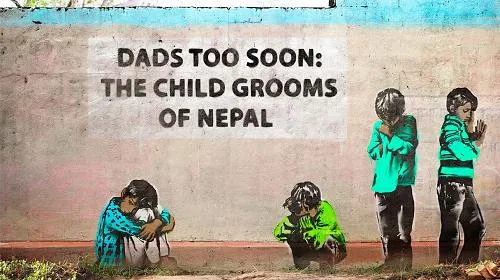Boys married as young as 7 suffer trauma, now growing into key allies against child marriage.
KAPILBASTU, Nepal (June 15, 2015) — Boys forced to marry as young as 7 years old in Nepal endure psychological trauma, have children early and often drop out of school to support their new families, according to a report released today by the poverty-fighting group CARE.
Titled “Dads Too Soon: The Child Grooms of Nepal,” the multimedia report details the forces pushing boys into early marriages in the farming villages of western Nepal. And it comes amid fears that April’s devastating earthquake, which killed more than 8,000 people in and around the capital Kathmandu, will further isolate rural communities. That could lead to greater economic stress and more early marriages in a country already home to one of the world’s highest rates of child marriage: 41 percent for girls and 11 percent for boys.
But the analysis also offers hope. Former child grooms are emerging as key allies in the movement to end early marriage. “They know what it’s like to be trapped between boyhood and fatherhood,” said Gita Kumari Shah, who heads up monitoring for CARE’s Tipping Point program, designed to strike at the root causes of child marriage. “And that makes them particularly effective at promoting change so fewer boys and girls have to endure what they did.”
Child marriage exacts its heaviest toll on girls. Nearly 39,000 girls are forced into marriage daily around the world. That’s roughly one child bride every two seconds and enough to fill Boston’s Fenway Park — every day. These girls are ripped from their homes as young as age 10, putting them at serious risk of domestic abuse, HIV infection and death in childbirth.
CARE’s report uses photos, videos and graphics to shed light on the often-overlooked impact of child marriage on boys in Nepal. In most places where early marriage is prevalent, men wed girls. But in the rice-farming plains of western Nepal, near the border with India, boys and girls often are forced to marry each other. They go through wedding ceremonies in their pre-teens, live apart for a few years, then move in together with the expectation of starting a family when boys are in their early teens or even as young as 12 years old, the report reveals.
In fact, Nepal is one of only eight countries in the world where more than 10 percent of boys are married before the age of 18 nationwide, according to UNICEF data. While the reasons are many, chief among them is intense pressure from neighbors and family. “We hear over and over again from parents that people in the community start whispering and wondering what’s wrong with a child if he or she isn’t married early,” Kumari Shah said. “The pressure is hardest to take for poor families who can least afford to take risks. Wait too long, they fear, and their child will be stigmatized and unable to marry.”
CARE’s Tipping Point program has surfaced this and other underlying causes of child marriage through discussion groups of girls, women, boys and men. Opinions are starting to change. And among the most influential voices are of those who speak from experience, the people who know all too well what it’s like to be a mom — or a dad — too soon.
Media contacts: To speak with one of CARE’s child marriage experts, contact Nicole Harris at nharris@care.org, 404-735-0871; or Brian Feagans at bfeagans@care.org, 404-979-9453.
The report: Can be found at childgrooms.care.org. Individual photos, video clips and graphic resources also available upon request.
About CARE
Founded in 1945 with the creation of the CARE Package®, CARE is a leading humanitarian organization fighting global poverty. CARE places special focus on working alongside poor girls and women because, equipped with the proper resources, they have the power to lift whole families and entire communities out of poverty. A nonpartisan, nonreligious organization, CARE worked in 90 countries last year and reached more than 72 million people around the world. To learn more, visit www.care.org.

